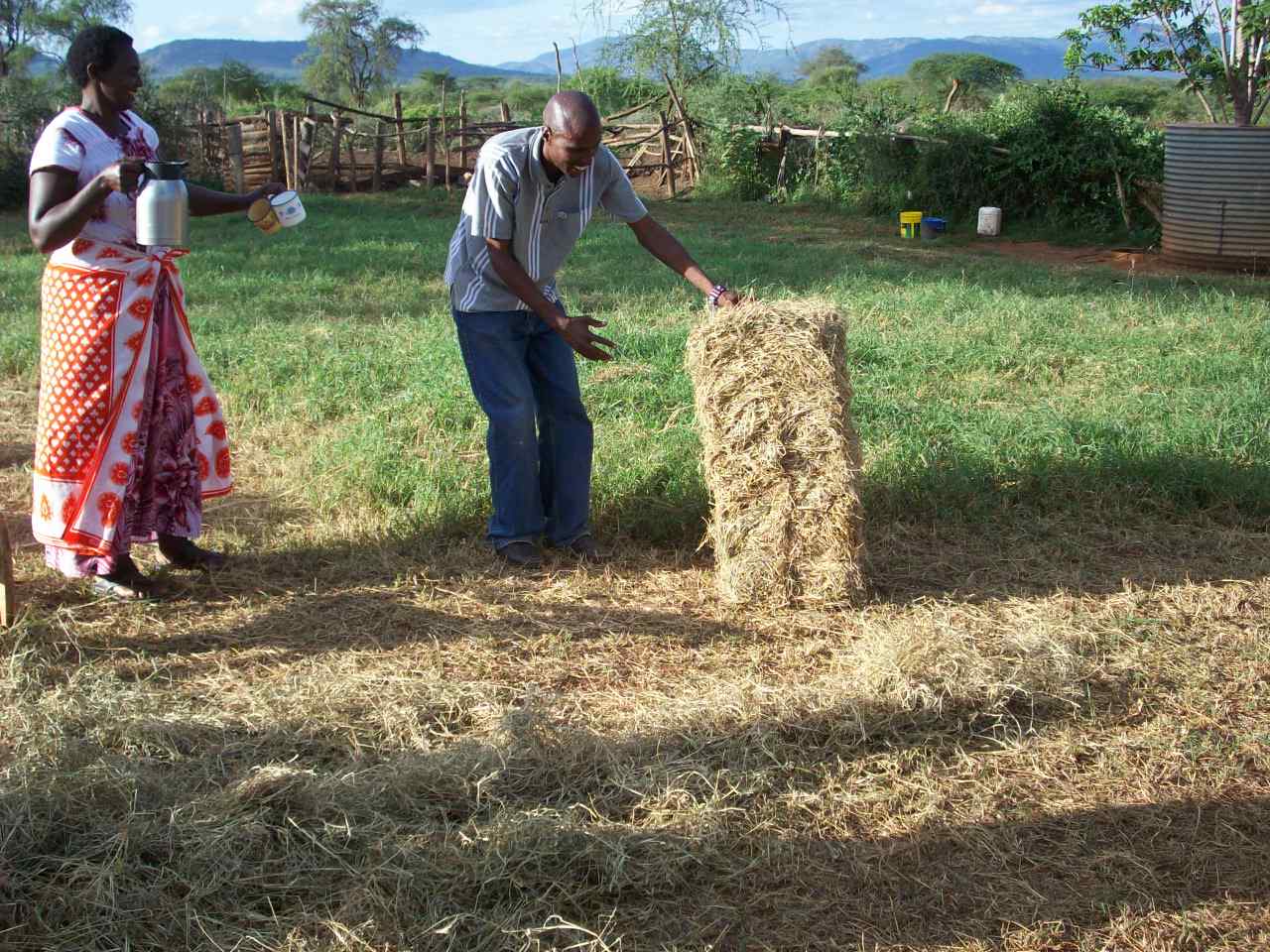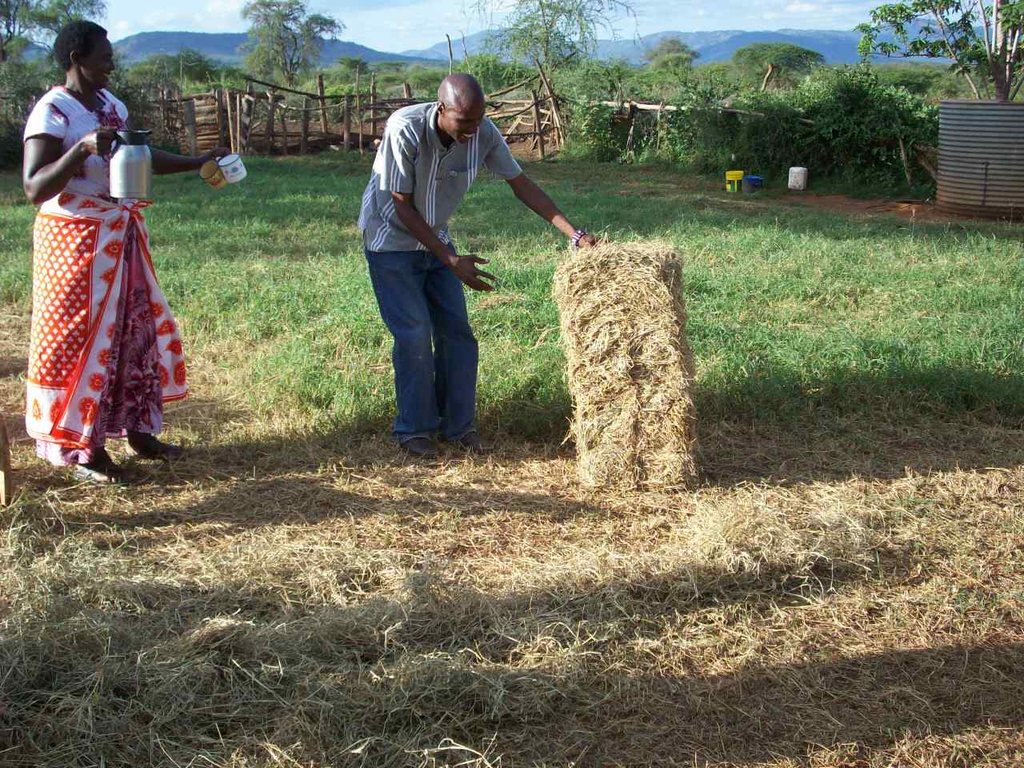Soil and water conservation. This assists in regeneration of pasture and prevention of desertification due to poor land use practices. [肯尼亚]
- 创建:
- 更新:
- 编制者: SAIKO JOYCE
- 编辑者: –
- 审查者: Hanspeter Liniger, Rima Mekdaschi Studer, Donia Mühlematter, Joana Eichenberger
Eramatata e nkulukuoni pee ebulu inkijit
technologies_3220 - 肯尼亚
- Soil and water conservation. This assist in regeneration of pasture and prevention of desertification due to poor land use practices.: June 28, 2018 (inactive)
- Soil and water conservation. This assists in regeneration of pasture and prevention of desertification due to poor land use practices.: June 14, 2021 (inactive)
- Soil and water conservation. This assist in regeneration of pasture and prevention of desertification due to poor land use practices.: Sept. 3, 2018 (inactive)
- Soil and water conservation. This assists in regeneration of pasture and prevention of desertification due to poor land use practices.: Nov. 2, 2021 (public)
- Soil and water conservation. This assist in regeneration of pasture and prevention of desertification due to poor land use practices.: May 22, 2018 (inactive)
查看章节
全部展开 全部收起1. 一般信息
1.2 参与该技术评估和文件编制的资源人员和机构的联系方式
关键资源人
土地使用者:
MILIA Duncan Milia
NEIGHBOURS INITIATIVE ALLIANCE
肯尼亚
1.3 关于使用通过WOCAT记录的数据的条件
编制者和关键资源人员接受有关使用通过WOCAT记录数据的条件。:
是
1.4 所述技术的可持续性声明
这里所描述的技术在土地退化方面是否存在问题,导致无法被认为是一种可持续的土地管理技术?:
否
注释:
The technology is land friendly and has sustained the Maasai pastoralists livelihood so far.
2. SLM技术的说明
2.1 技术简介
技术定义:
In this new technology the Maasai people set aside some acres of land, fence it and plant grass where the land is bear or allow natural standing grass to germinate then harvest it and store as hay for future use. This also helps in preventing soil erosion and surface run off.
2.2 技术的详细说明
说明:
The Technology is applied in a natural environment where grass is grow for livestock consumption and sometime for sale in case there is plenty. The main elements of this simple technology is using both existing and experts knowledge to grow grass and conserve it as hay as well as retaining underground water and conserving fertile soils. Identification and fencing of land, planting of grass where necessary has been key in the technology. The purpose of the technology is to regenerate more pasture in arid and semi-arid areas hence sustaining people livelihoods. To maintain the activity, simple tools like sickles, panga, ropes, hay boxes/hole and construction of hay ban/store. The technology helps to provide hay/pasture throughout the season, prevent livestock deaths and providing sustainable source of income for the Maasai. Once there is sustainable income, children will be enrolled in schools and will be able to complete their studies. There will be no livestock migration hence reduced livestock deaths due to diseases and hunger. Land user like continuous supply of hay for livestock, increased production and increased income at the household level. They sometimes do not like to work as labourers as they consider that as lot of work.
2.3 技术照片
2.4 技术视频
注释、简短说明:
NO VIDEOS FOR THE TECHNOLOGY AVAILABLE FOR NOW
日期:
18/10/2017
位置:
KAJIADO -KENYA
摄影师的名字:
NONE
2.5 已应用该技术的、本评估所涵盖的国家/地区/地点
国家:
肯尼亚
区域/州/省:
KAJIADO
有关地点的进一步说明:
ENKORIKA LOCATION OF KAJIADO CENTRAL SUB-COUNTY
具体说明该技术的分布:
- 适用于特定场所/集中在较小区域
注释:
The technology is spreading faster among Maasai pastoralists and its impact is already visible.
Map
×2.7 技术介绍
详细说明该技术是如何引入的:
- 通过项目/外部干预
3. SLM技术的分类
3.1 该技术的主要目的
- 改良生产
- 减少、预防、恢复土地退化
- 保护生态系统
- 降低灾害风险
- 适应气候变化/极端天气及其影响
- 创造有益的经济影响
3.2 应用该技术的当前土地利用类型

牧场
粗放式放牧:
- 半游牧畜牧业
- Sahiwal, zebu cattle
产品和服务:
- 肉类
- 奶类
注释:
The land is used for grazing livestock either on open fields or for keeping livestock in fenced secured places, where it is fed with hay (this only happens during dry seasons).
Number of growing seasons per year: 2
April-May and October-December
3.3 由于技术的实施,土地使用是否发生了变化?
注释:
The Maasai used to graze their livestock on open grass land during the group ranch tenure system. There were not specific places designated for grazing during the rainy or dry season everybody grazed where they wanted.
3.4 供水
该技术所应用土地的供水:
- 雨养
注释:
This is a semi-arid area with two raining seasons (April-May and October-December) under normal situation but the area can miss rain for an entire year.
3.5 该技术所属的SLM组
- 区域封闭(停止使用,支持恢复)
- 畜牧业和牧场管理
3.6 包含该技术的可持续土地管理措施

植物措施
- V2:草和多年生草本植物

管理措施
- M2:改变管理/强度级别
- M4:活动时间安排的重大变化
注释:
Land use is changed from normal grazing land to fenced area designated for hay production.
3.7 该技术强调的主要土地退化类型

土壤水蚀
- Wt:表土流失/地表侵蚀

生物性退化
- Bc:植被覆盖的减少

水质恶化
- Ha:干旱化
注释:
The technology address soil and water conservation which increases pasture generation hence safe livelihoods
3.8 防止、减少或恢复土地退化
具体数量名该技术与土地退化有关的目标:
- 减少土地退化
- 修复/恢复严重退化的土地
注释:
Most of the land, where the technology is applied on has been degraded hence reducing its production
4. 技术规范、实施活动、投入和成本
4.1 该技术的技术图纸
技术规范(与技术图纸相关):
NO drawing available for now.
4.2 有关投入和成本计算的一般信息
具体说明成本和投入是如何计算的:
- 每个技术区域
注明尺寸和面积单位:
100 acres
其它/国家货币(具体说明):
Kenyan Shilling (KES)
如相关,注明美元与当地货币的汇率(例如1美元=79.9巴西雷亚尔):1美元=:
100.31
注明雇用劳工的每日平均工资成本:
500 KES
4.3 技术建立活动
| 活动 | 时间(季度) | |
|---|---|---|
| 1. | Land identification | 6 hours |
| 2. | Fencing of identified land | 5 or more days depending on land size |
| 3. | Land preparation for reseeding | 7 days or more |
| 4. | Reseeding | 3 hours |
| 5. | Continuous management and weeding | Through out the period when the grass is in the field before harvesting |
| 6. | Harvesting | 12 hours or more |
| 7. | Hay storage | 4 hours |
注释:
Each step of the process is important and is given attention for production to be complete
4.4 技术建立所需要的费用和投入
| 对投入进行具体说明 | 单位 | 数量 | 单位成本 | 每项投入的总成本 | 土地使用者承担的成本% | |
|---|---|---|---|---|---|---|
| 劳动力 | fencing | person days | 5.0 | 500.0 | 2500.0 | 100.0 |
| 劳动力 | preparation of land and seeding | person days | 8.0 | 500.0 | 4000.0 | 100.0 |
| 劳动力 | fertilization and weeding | peson days | 7.0 | 500.0 | 3500.0 | 100.0 |
| 劳动力 | harvesting | person days | 1.0 | 500.0 | 500.0 | 100.0 |
| 设备 | building of hay storage facility | person days | 5.0 | 500.0 | 2500.0 | 100.0 |
| 设备 | hay bale press (as seen in the picture) | machine hour | 2.0 | |||
| 植物材料 | grass seeds | kg | 8.0 | |||
| 肥料和杀菌剂 | manure | |||||
| 施工材料 | fencing material poles | pieces | ||||
| 施工材料 | fencing material wire mesh | meters | ||||
| 施工材料 | storage facility (corrugated metal sheets for roof, cement for base, poles and wire mesh for sides etc | |||||
| 技术建立所需总成本 | 13000.0 | |||||
| 技术建立总成本,美元 | 129.6 | |||||
4.5 维护/经常性活动
| 活动 | 时间/频率 | |
|---|---|---|
| 1. | Reparation of fence | require repair may be once every season |
| 2. | Land preparation | Done every raining season |
| 3. | Seeds section | One on the onset of the planting season |
| 4. | Harvesting of hay | Hay is harvested once it is ready |
| 5. | Safe storage of hay | Done once (building the store) |
4.7 影响成本的最重要因素
描述影响成本的最决定性因素:
Purchase of materials at the beginning of the project.
5. 自然和人文环境
5.1 气候
年降雨量
- < 250毫米
- 251-500毫米
- 501-750毫米
- 751-1,000毫米
- 1,001-1,500毫米
- 1,501-2,000毫米
- 2,001-3,000毫米
- 3,001-4,000毫米
- > 4,000毫米
有关降雨的规范/注释:
Annual rainfall is not predictable, it keeps changing every year
注明所考虑的参考气象站名称:
Kenya Meteorological Department
农业气候带
- 半干旱
Long dry, and windy seasons
5.2 地形
平均坡度:
- 水平(0-2%)
- 缓降(3-5%)
- 平缓(6-10%)
- 滚坡(11-15%)
- 崎岖(16-30%)
- 陡峭(31-60%)
- 非常陡峭(>60%)
地形:
- 高原/平原
- 山脊
- 山坡
- 山地斜坡
- 麓坡
- 谷底
垂直分布带:
- 0-100 m a.s.l.
- 101-500 m a.s.l.
- 501-1,000 m a.s.l.
- 1,001-1,500 m a.s.l.
- 1,501-2,000 m a.s.l.
- 2,001-2,500 m a.s.l.
- 2,501-3,000 m a.s.l.
- 3,001-4,000 m a.s.l.
- > 4,000 m a.s.l.
说明该技术是否专门应用于:
- 凹陷情况
关于地形的注释和进一步规范:
The land is flat with little vegetation cover. The area receives minimal rainfall
5.3 土壤
平均土层深度:
- 非常浅(0-20厘米)
- 浅(21-50厘米)
- 中等深度(51-80厘米)
- 深(81-120厘米)
- 非常深(> 120厘米)
土壤质地(表土):
- 中粒(壤土、粉土)
土壤质地(地表以下> 20厘米):
- 细粒/重质(粘土)
表土有机质:
- 高(>3%)
5.4 水资源可用性和质量
地下水位表:
> 50米
地表水的可用性:
中等
水质(未处理):
不良饮用水(需要处理)
该区域正在发生洪水吗?:
否
关于水质和水量的注释和进一步规范:
Water quality is poor and its storage is poor too
5.5 生物多样性
物种多样性:
- 高
栖息地多样性:
- 高
5.6 应用该技术的土地使用者的特征
定栖或游牧:
- 半游牧的
生产系统的市场定位:
- 生计(自给)
相对财富水平:
- 平均水平
个人或集体:
- 个人/家庭
- 团体/社区
机械化水平:
- 手工作业
- 畜力牵引
性别:
- 女人
- 男人
土地使用者的年龄:
- 中年人
说明土地使用者的其他有关特征:
Most of them are illiterate hence require continuous training and demonstration
5.7 应用该技术的土地使用者使用的平均土地面积
- < 0.5 公顷
- 0.5-1 公顷
- 1-2 公顷
- 2-5公顷
- 5-15公顷
- 15-50公顷
- 50-100公顷
- 100-500公顷
- 500-1,000公顷
- 1,000-10,000公顷
- > 10,000公顷
这被认为是小规模、中规模还是大规模的(参照当地实际情况)?:
- 小规模的
注释:
The maasai own large pieces of land but only set aside a small portion for the technology.
5.8 土地所有权、土地使用权和水使用权
土地所有权:
- 个人,有命名
土地使用权:
- 个人
用水权:
- 社区(有组织)
注释:
Most of the water sources are communally own. So rules are set to govern water use.
5.9 进入服务和基础设施的通道
健康:
- 贫瘠
- 适度的
- 好
教育:
- 贫瘠
- 适度的
- 好
技术援助:
- 贫瘠
- 适度的
- 好
就业(例如非农):
- 贫瘠
- 适度的
- 好
市场:
- 贫瘠
- 适度的
- 好
能源:
- 贫瘠
- 适度的
- 好
道路和交通:
- 贫瘠
- 适度的
- 好
饮用水和卫生设施:
- 贫瘠
- 适度的
- 好
金融服务:
- 贫瘠
- 适度的
- 好
6. 影响和结论性说明
6.1 该技术的现场影响
社会经济效应
生产
饲料生产
注释/具体说明:
Fodder production was poor before the technology but have improved after the technology
饲料质量
注释/具体说明:
Fodder quality have also improved after the technology
畜牧生产
注释/具体说明:
The Maasai have increased milk and meat production after the technology was introduced.
水资源可用性和质量
家畜用水的可用性
注释/具体说明:
Surface water has been retained under the soil hence regeneration of pasture for long.
收入和成本
农业收入
社会文化影响
SLM/土地退化知识
冲突缓解
生态影响
水循环/径流
地表径流
注释/具体说明:
surface runoff has been controlled
蒸发
土壤
土壤水分
注释/具体说明:
Soil moisture improved after the technology
土壤流失
土壤有机物/地下C
6.2 该技术的场外影响已经显现
Overgrazing
6.3 技术对渐变气候以及与气候相关的极端情况/灾害的暴露和敏感性(土地使用者认为的极端情况/灾害)
渐变气候
渐变气候
| 季节 | 增加或减少 | 该技术是如何应对的? | |
|---|---|---|---|
| 年温度 | 增加 | 适度 | |
| 其他渐变气候 | 增加 | 适度 |
气候有关的极端情况(灾害)
气候灾害
| 该技术是如何应对的? | |
|---|---|
| 干旱 | 不好 |
6.4 成本效益分析
技术收益与技术建立成本相比如何(从土地使用者的角度看)?
短期回报:
稍微积极
长期回报:
积极
技术收益与技术维护成本/经常性成本相比如何(从土地使用者的角度看)?
短期回报:
稍微积极
长期回报:
积极
6.5 技术采用
- > 50%
在所有采用这项技术的人当中,有多少人是自发的,即未获得任何物质奖励/付款?:
- 11-50%
6.6 适应
最近是否对该技术进行了修改以适应不断变化的条件?:
否
6.7 该技术的优点/长处/机会
| 土地使用者眼中的长处/优势/机会 |
|---|
| Advantages of producing, managing and storing hay has been seen to improve livestock production hence improving income for the Maasai. |
| Production of hay also enhance skills and knowledge for the Maasai pastoralists. |
| Hay can also be produced and sold to other people which means additional income for the household. |
| 编制者或其他关键资源人员认为的长处/优势/机会 |
|---|
| Production of hay also enhance skills and knowledge for the Maasai pastoralists. |
| Advantages of producing, managing and storing hay has been seen to improve livestock production hence improving income for the Maasai. |
| Hay can also be produced and sold to other people which means additional income for the household. |
| This is a way to adapt to the changing environment for maasai pastoralists be it land tenure, limited mobility, climate variability and change (droughts), social and physical infrastructure etc. |
7. 参考和链接
7.1 信息的方法/来源
链接和模块
全部展开 全部收起链接
无链接
模块
无模块




